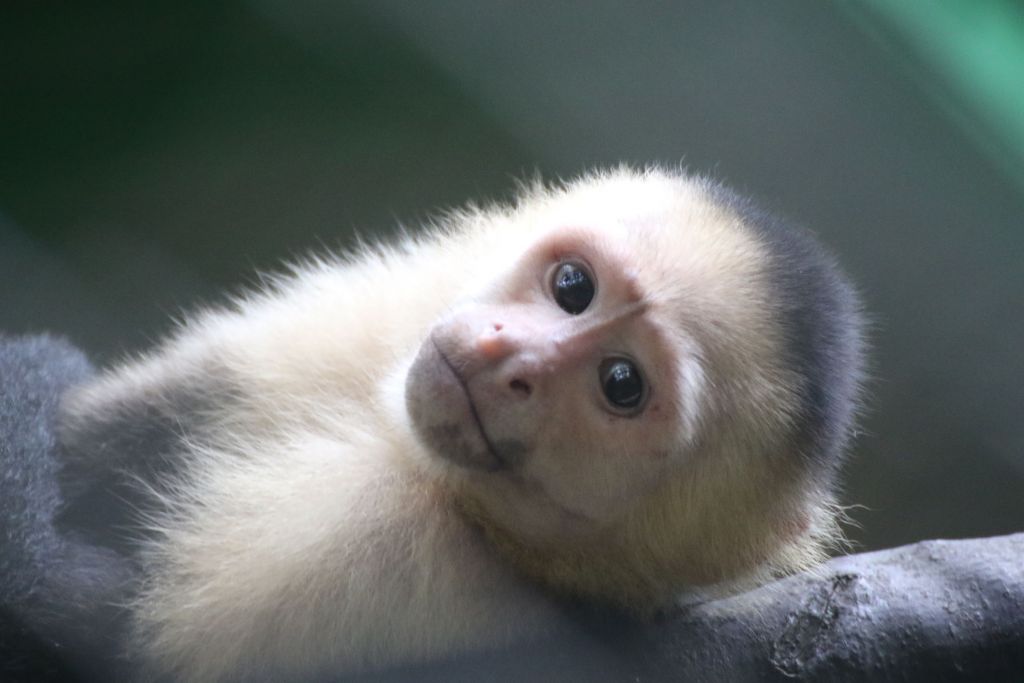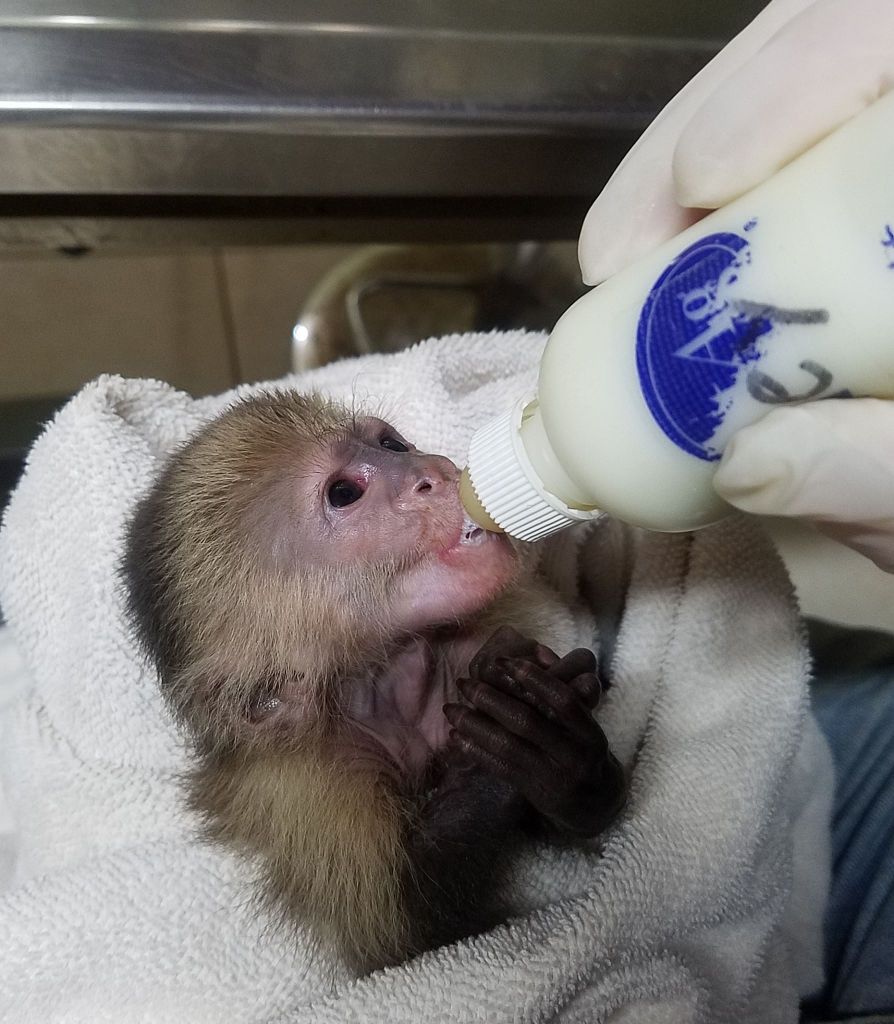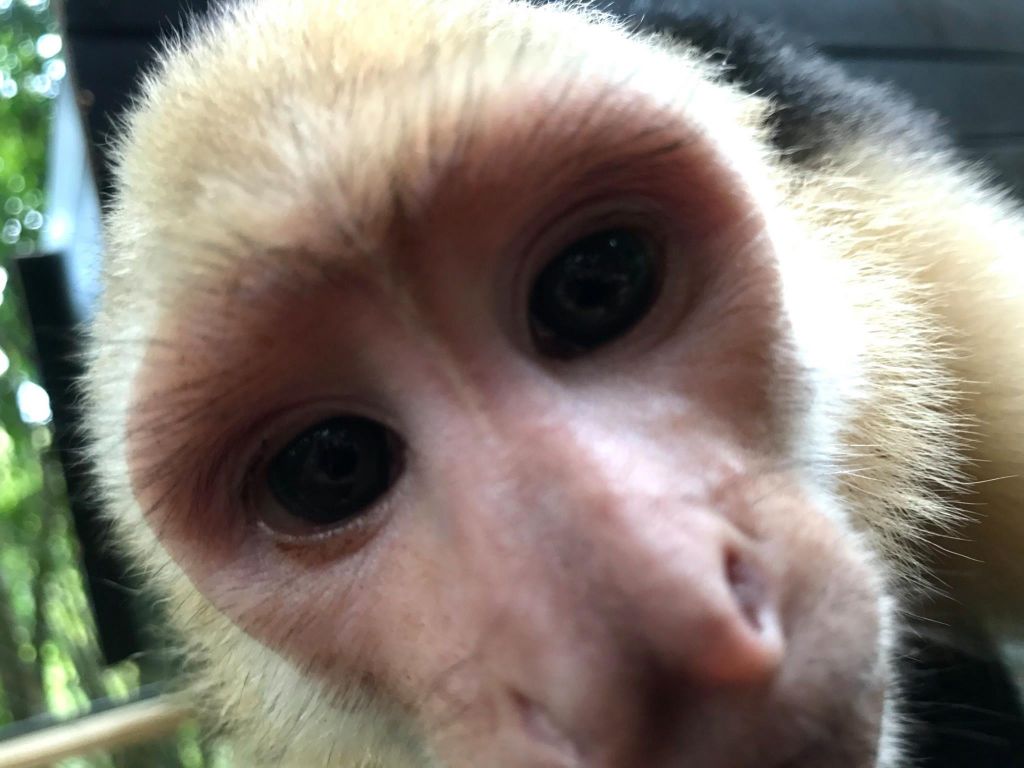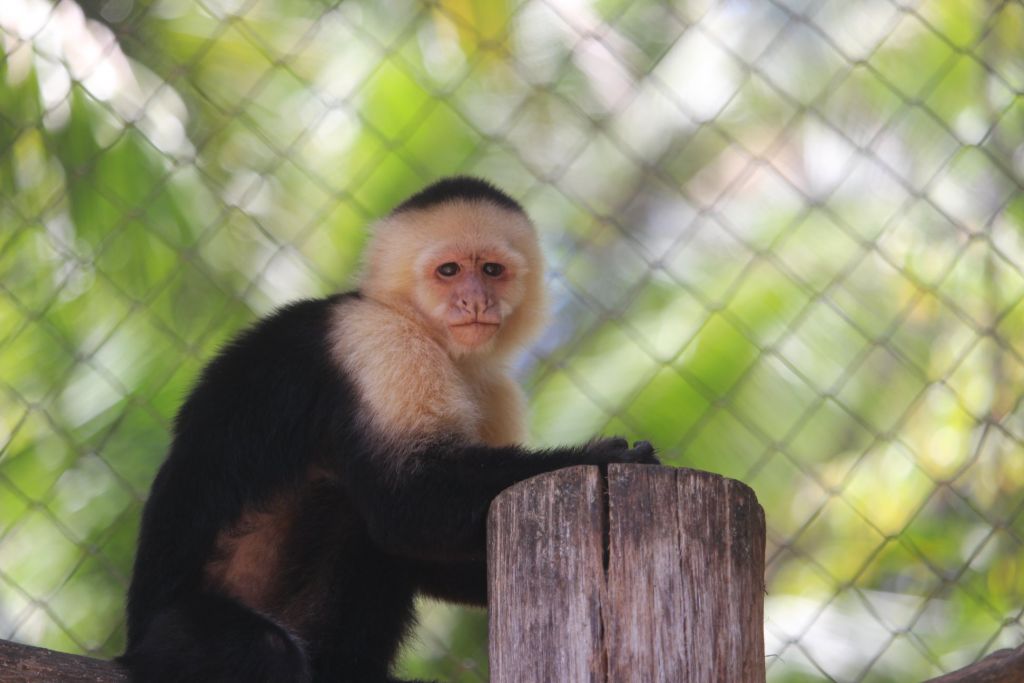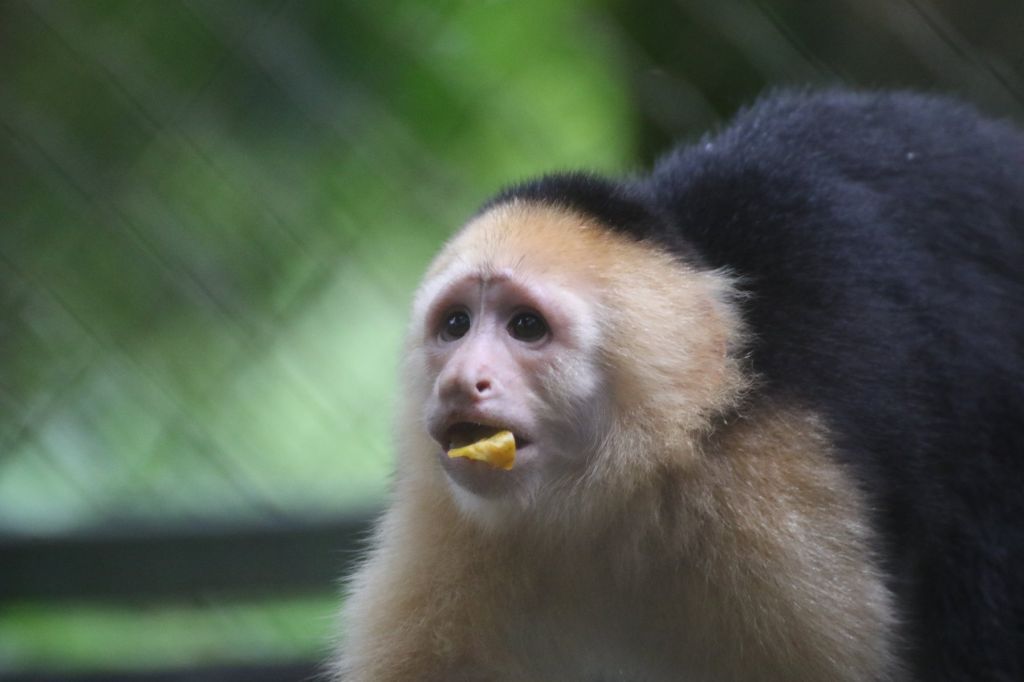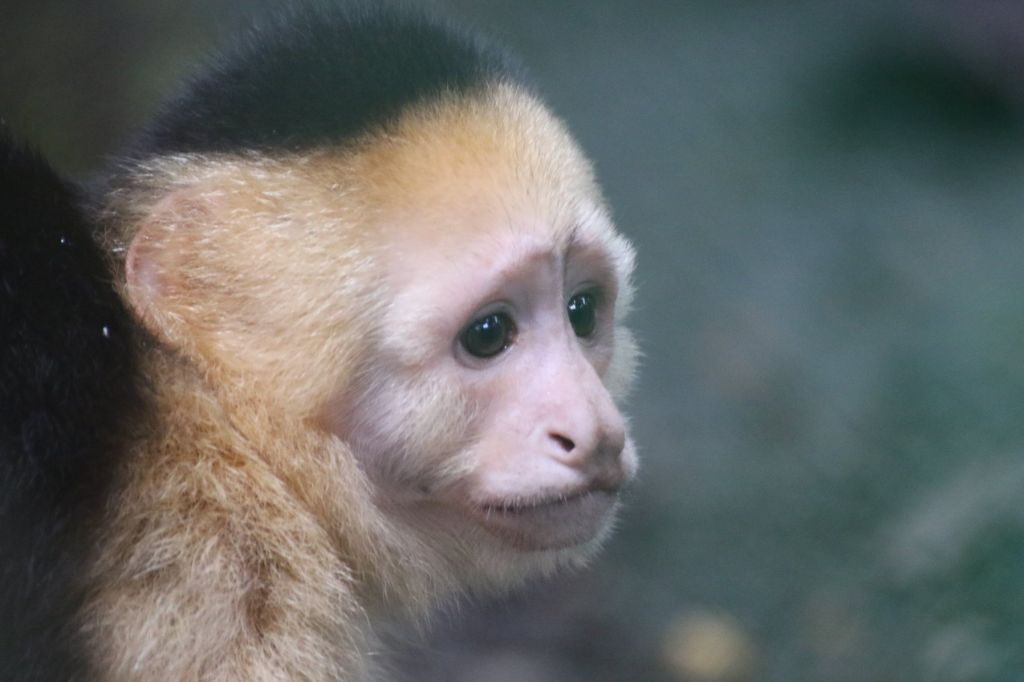Central American white-faced capuchin, is a medium-sized New World monkey of the family Cebidae, subfamily Cebinae. Native to the forests of Central America, the white-faced capuchin is important to rainforest ecology for its role in dispersing seeds and pollen.
In the wild, the Panamanian white-faced capuchin is versatile, living in many different types of forest, and eating many different types of food, including fruit, other plant material, invertebrates, and small vertebrates.
Taxonomy: (Cebus imitator)
Spanish Name: Mono carablanca
Other Common Names: Panamanian White-throated Capuchin
Conservation Status: VULNERABLE
Lifespan: The longest living White-faced Capuchin in captivity was recorded at 54 years.
Distribution: Most of Central America, from the Northernmost part of Honduras down to Panama.
Habitat: Found in most types of tropical forest but seem to prefer primary and advanced secondary growth forest.
Behavior: Most of Central America, from the Northernmost part of Honduras down to Panama.
Weight: Up to 3.9kg for males; up to 2.7kg for females.
Diet: White-faced Capuchins are known for their tool use and will use almost any tool at their disposal. They eat a wide variety of fruits and insects but will also eat eggs, invertebrates and smaller vertebrates, such as lizards, frogs, crabs, oysters and squirrels. A troop of them is capable of bringing down larger prey. They consider bromeliad leaves to be a source of snacking, both on the animals that live there as well as the fleshy leaves themselves.
Reproduction: While troops can include from five to a couple dozen males, the males usually disperse from their natal groups and the alpha male becomes the father of most of the offspring of the troop. Females are able to reproduce at four years old and generally produce offspring every two years.
Threats: Habitat loss and deforestation have reduced the numbers of the White-faced Capuchin, but they also have been victims of the pet trade and have been hunted as crop pests and for meat.
At Alturas: All three of the White-faced Capuchin monkeys living out their lives at Alturas are female. All three were formerly pets, but each came from a very different background. While Honey lived with a family south of the sanctuary, Coco was kept on a leash and was being walked around the city streets of San Isidro. Pablo has the most unusual background, since she spent her life prior to Alturas as the pet of a drug cartel that was arrested at the Costa Rican border. Each has her own preferences and personalities.


